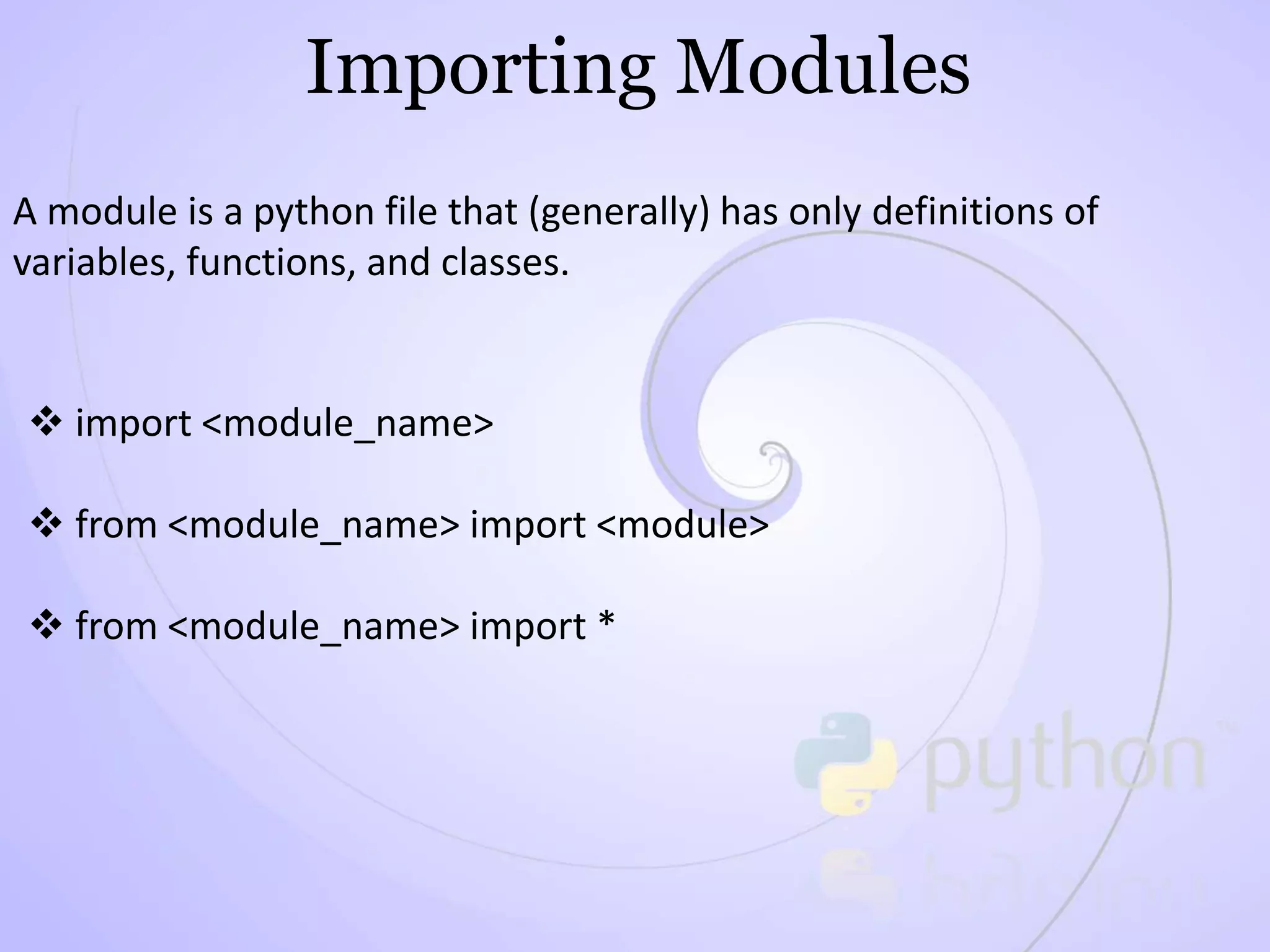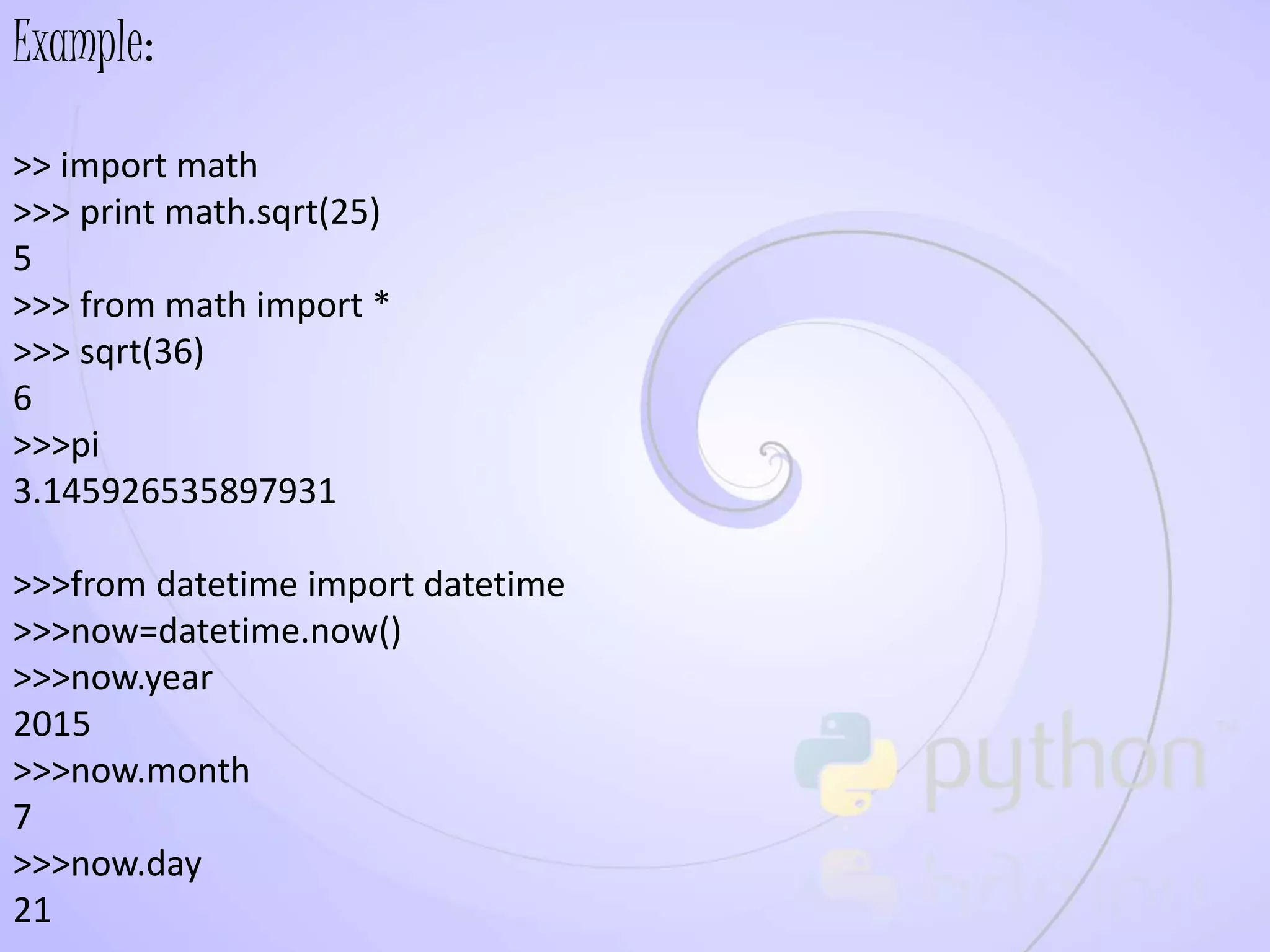Python is a high-level, interpreted programming language that is designed to be easy to read and write. It has a clear syntax using English keywords and its code is often shorter than languages like C++ and Java. Python is widely used for web development, software development, science, and machine learning. It has a large standard library and can be extended through modules. Some key data structures in Python include lists, tuples, and dictionaries.
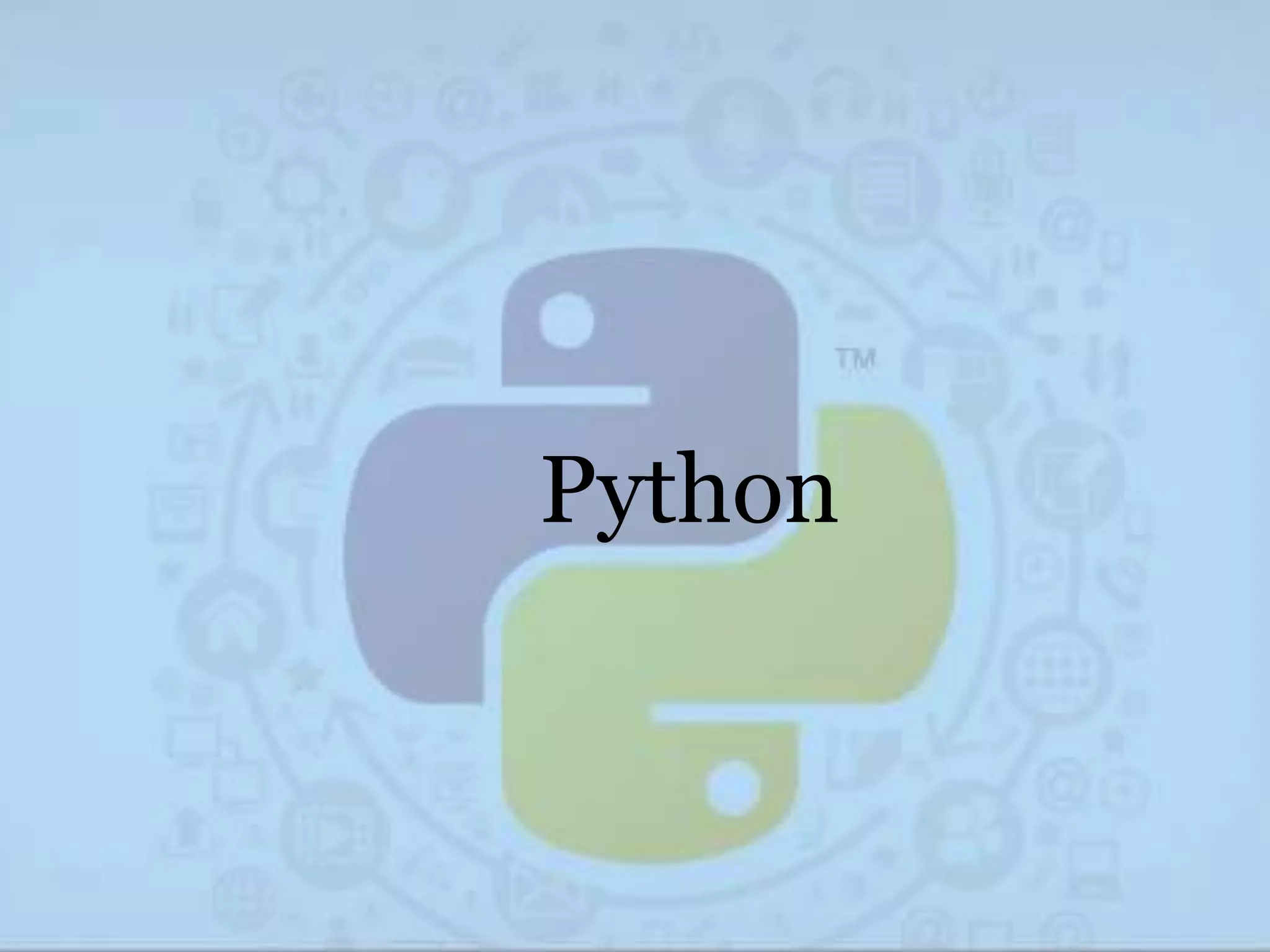
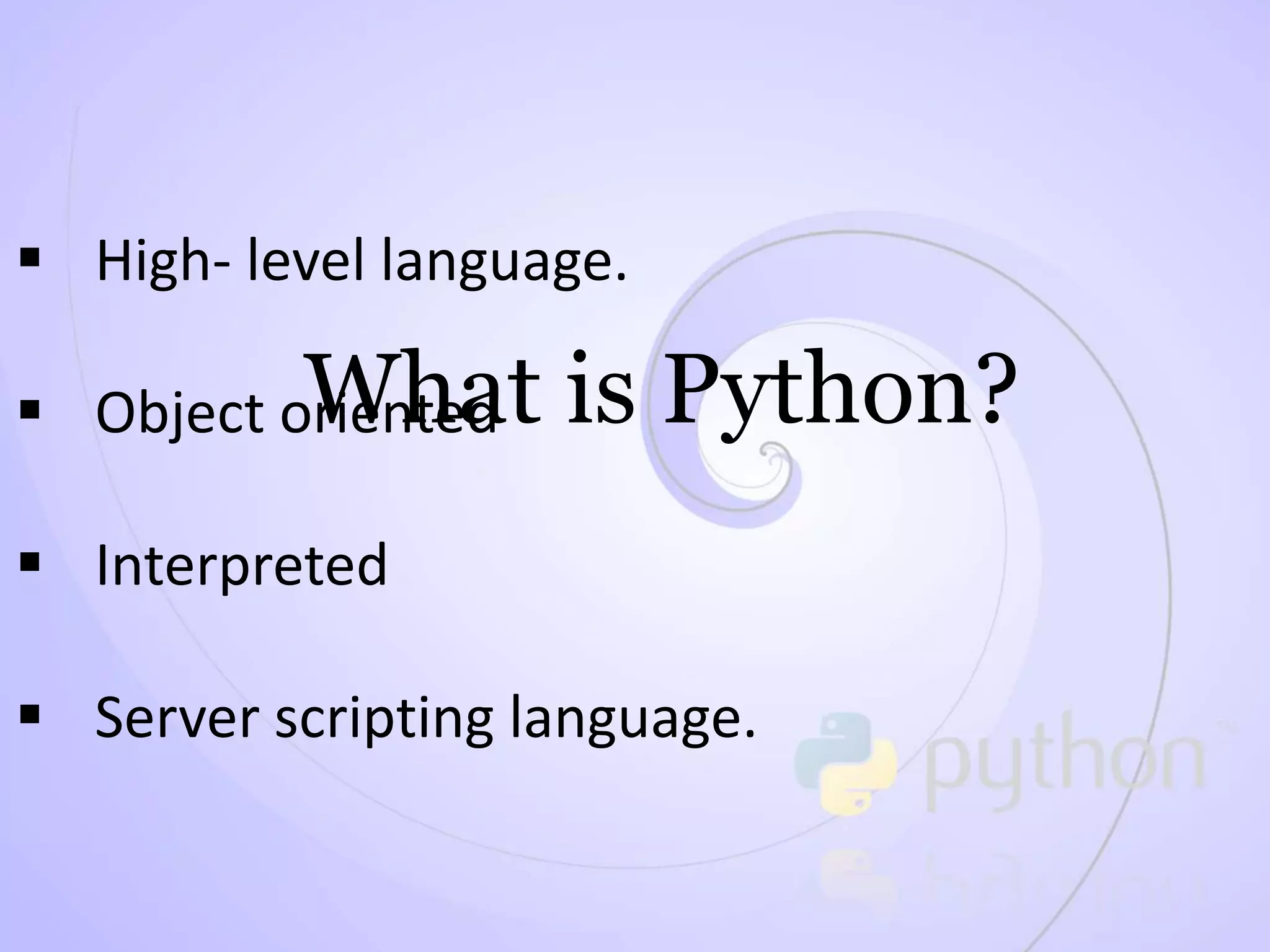

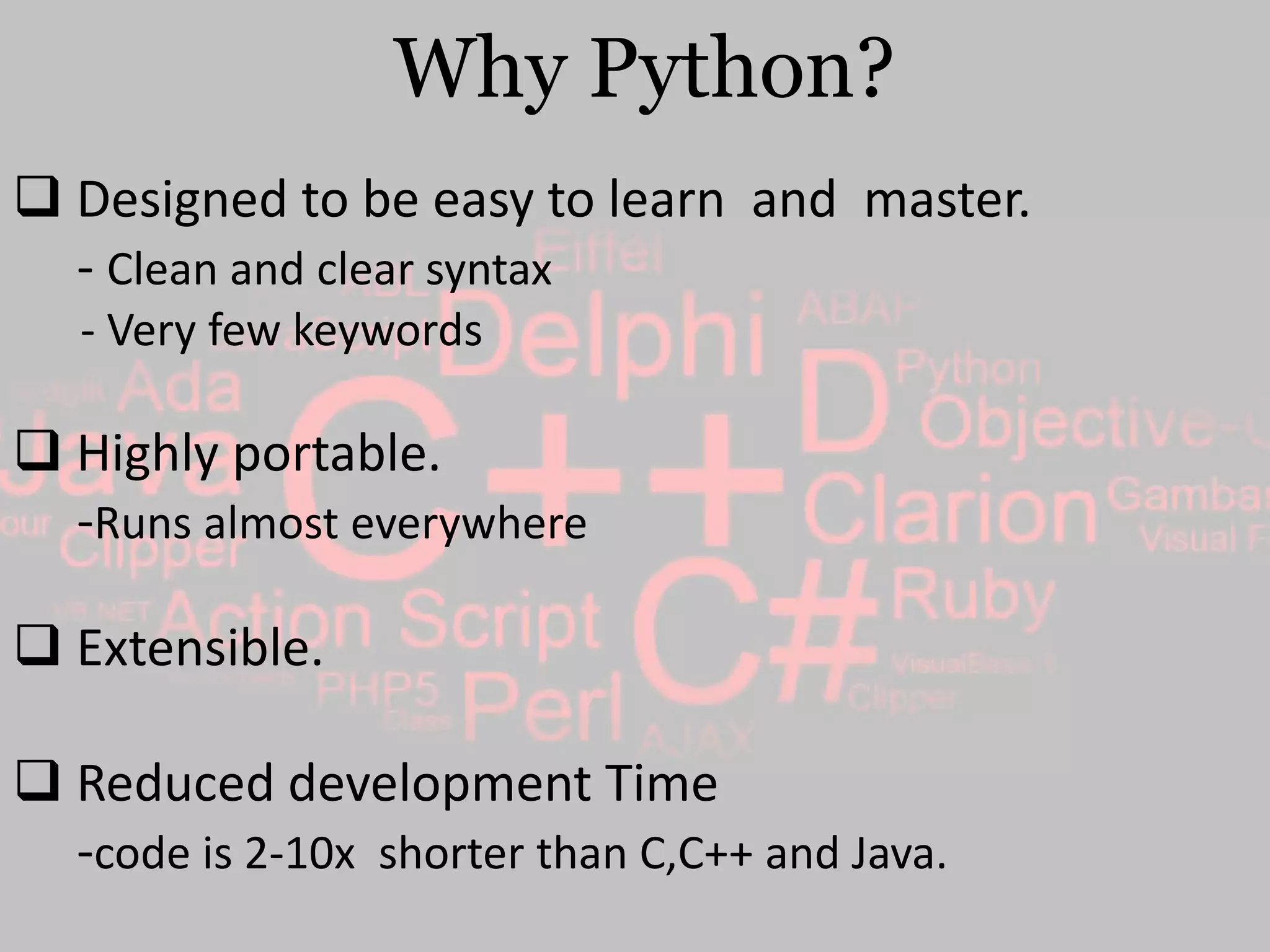
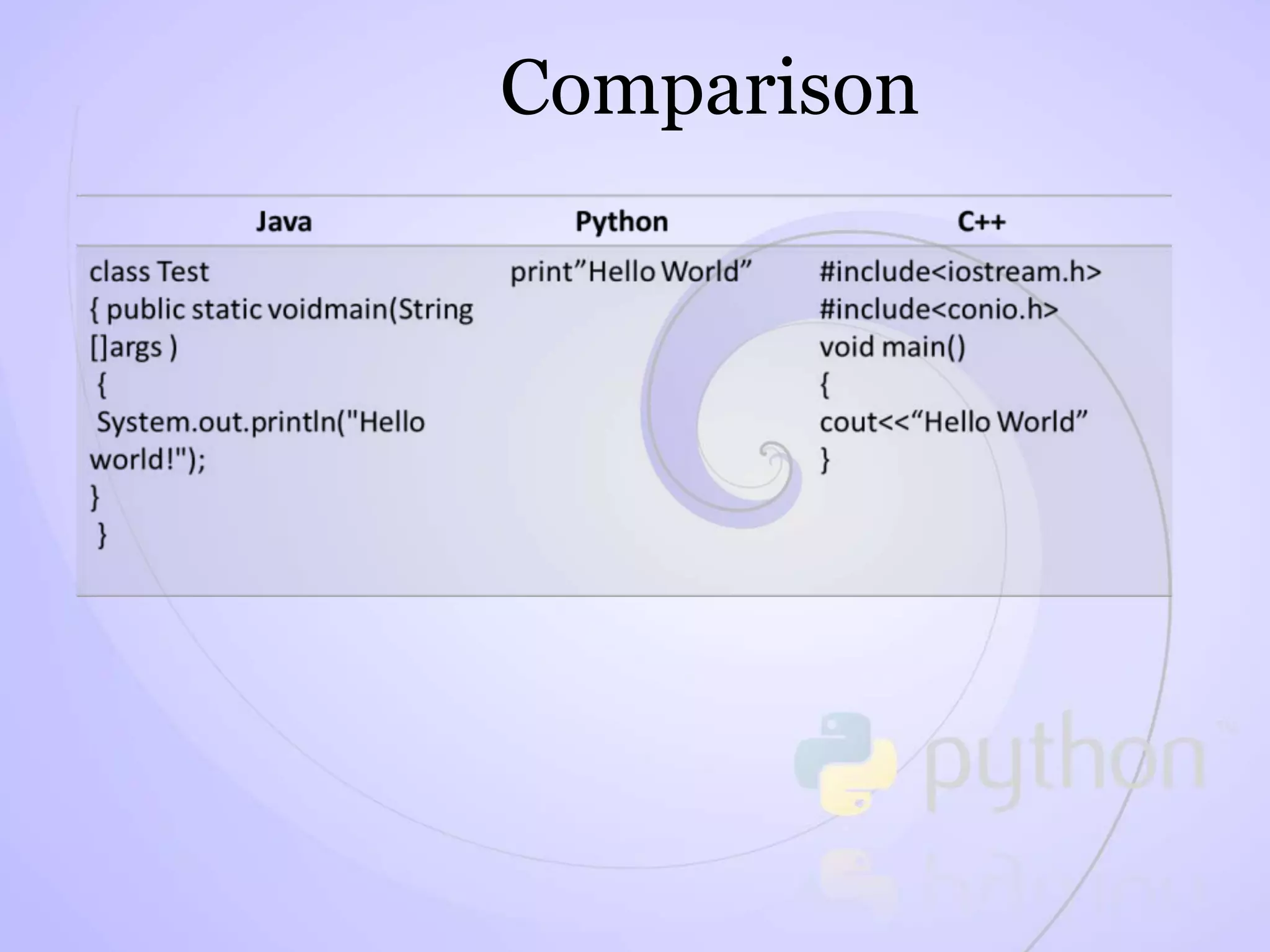
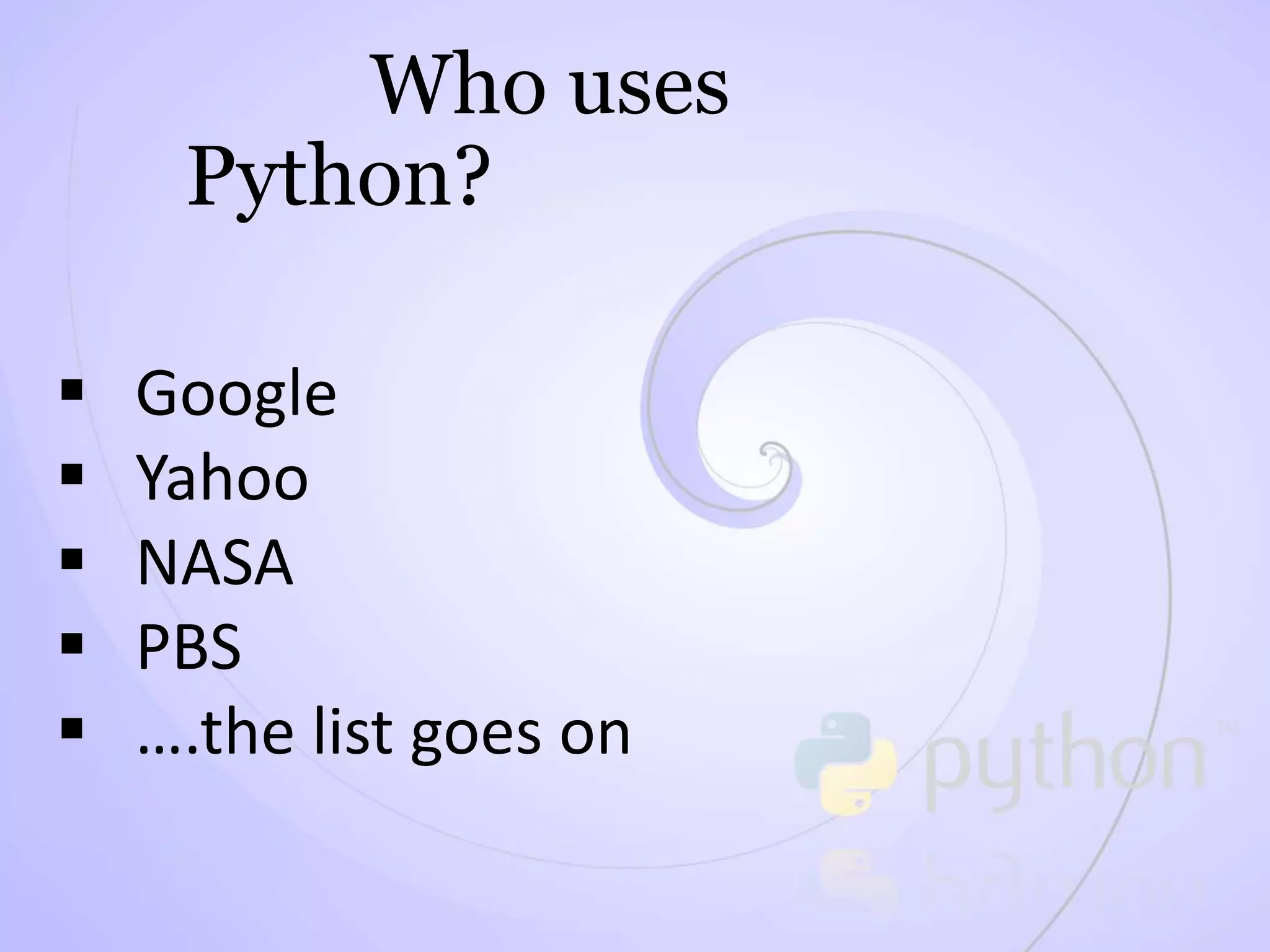
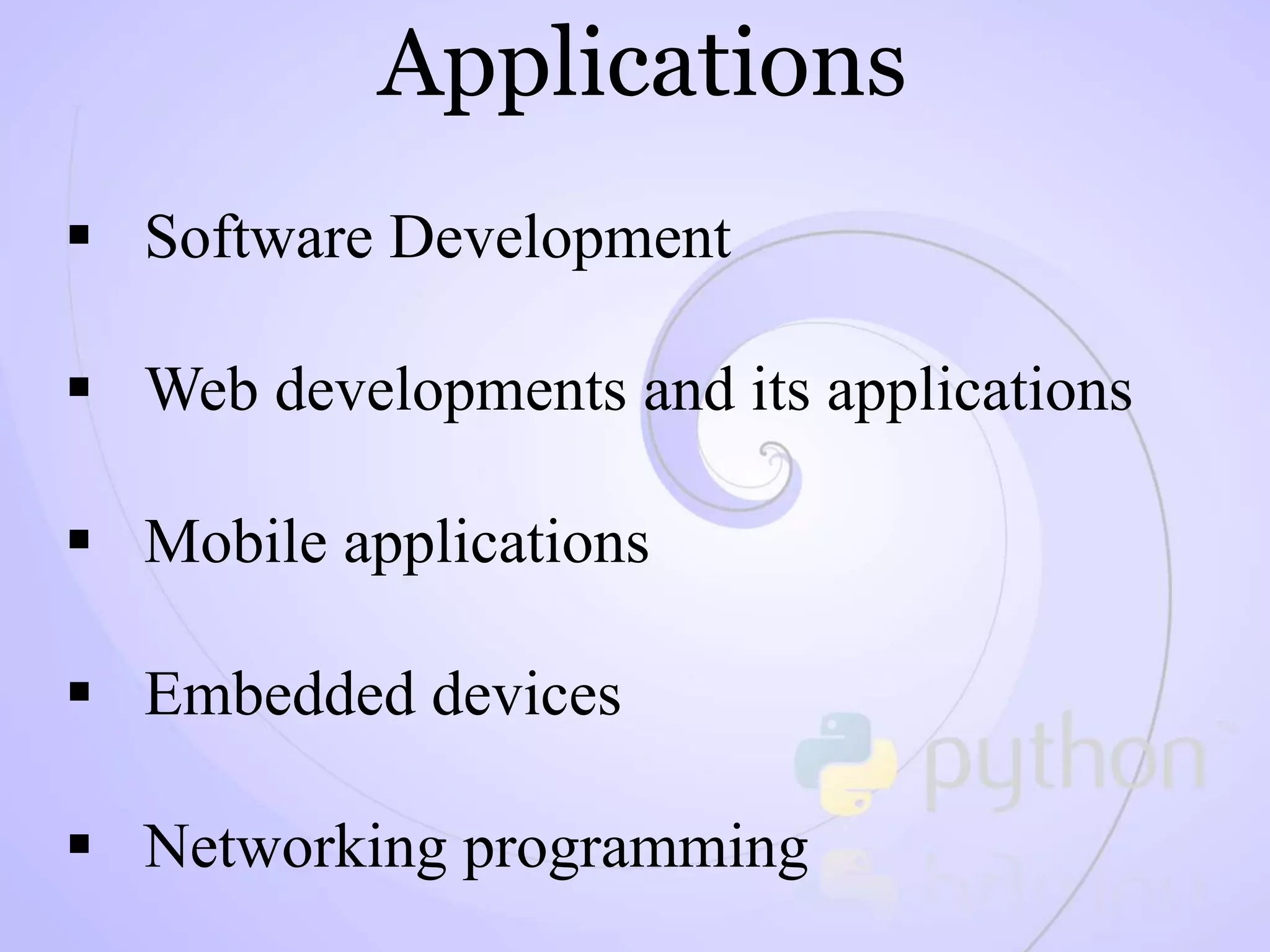
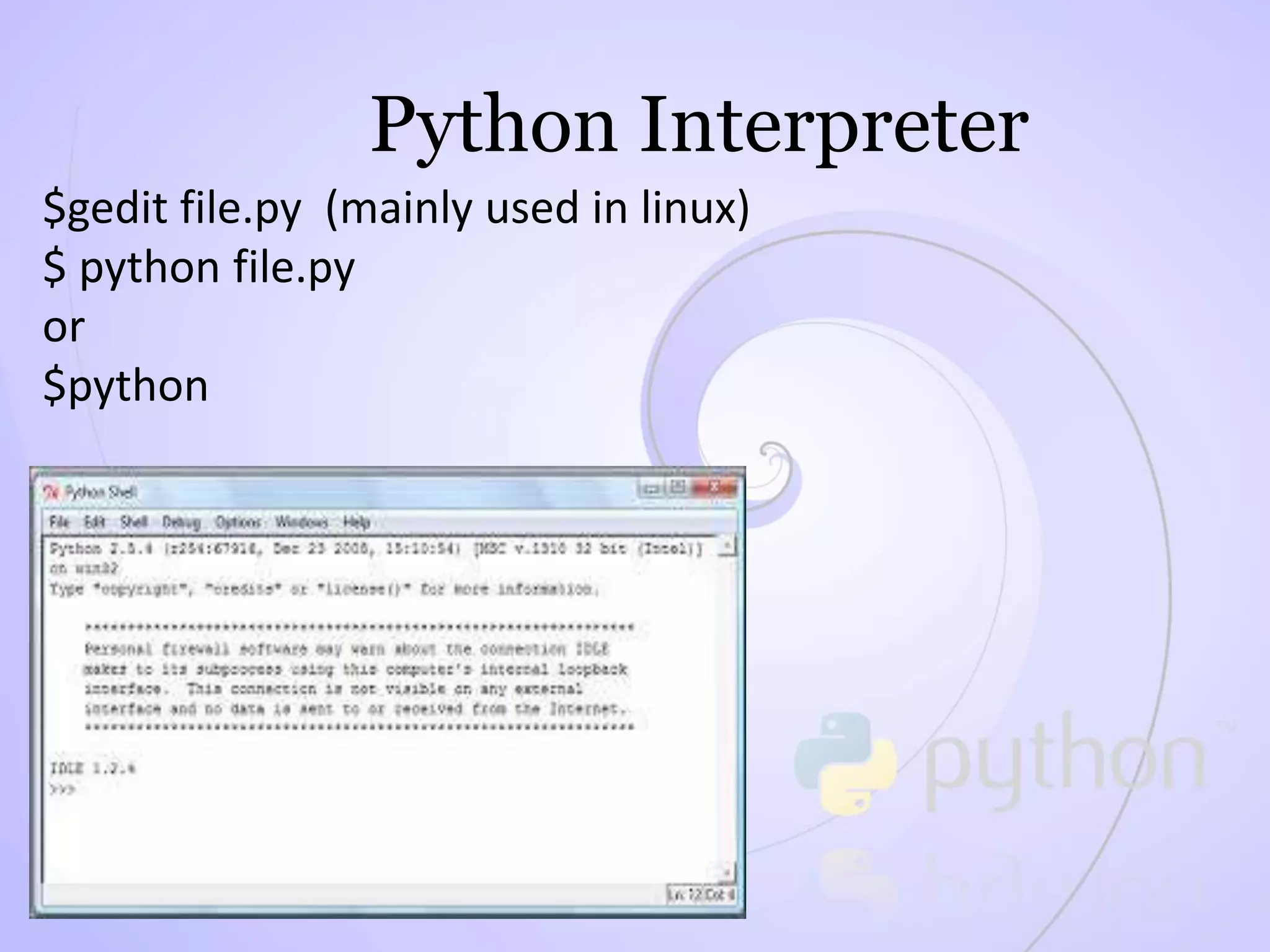
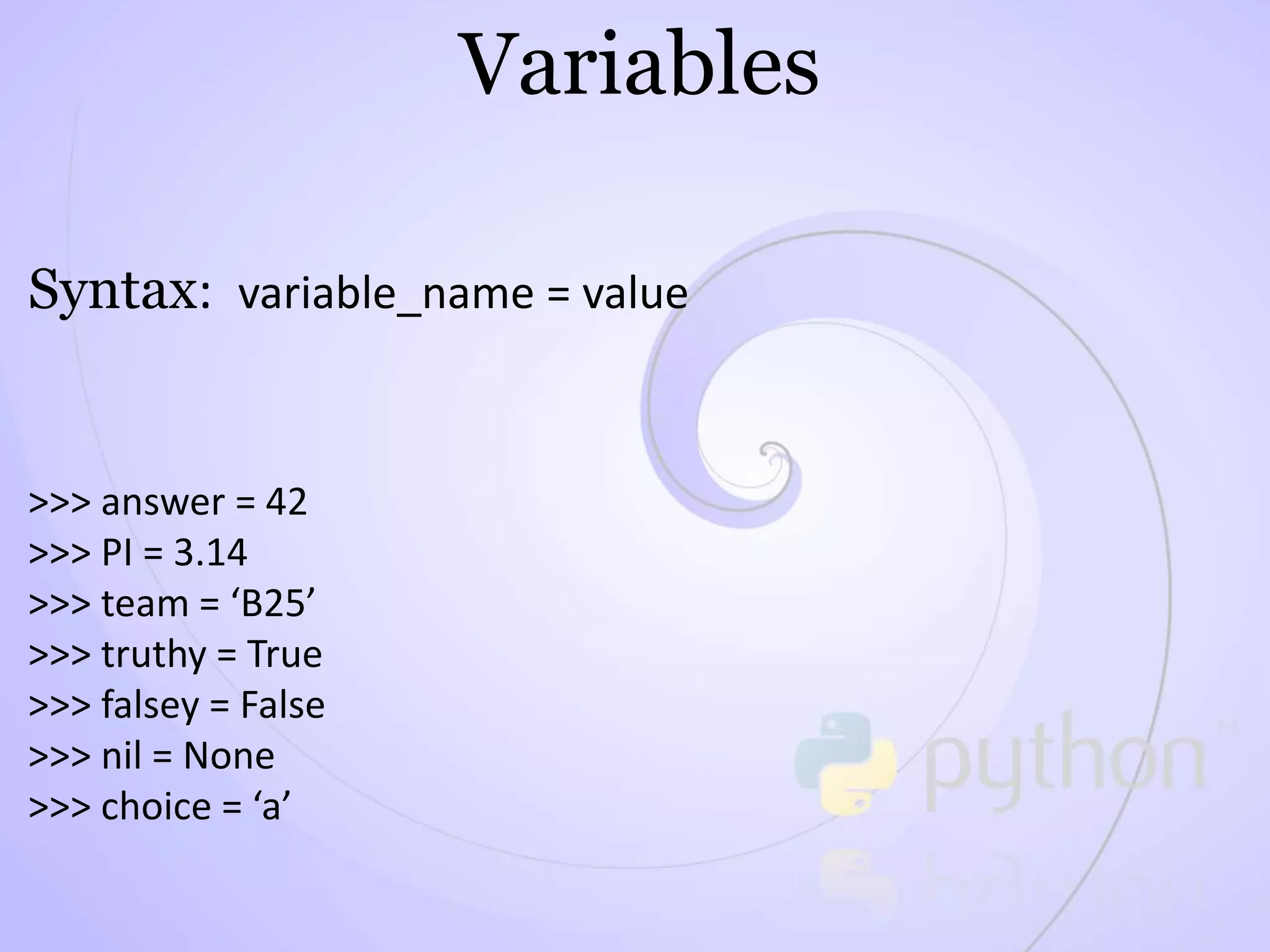
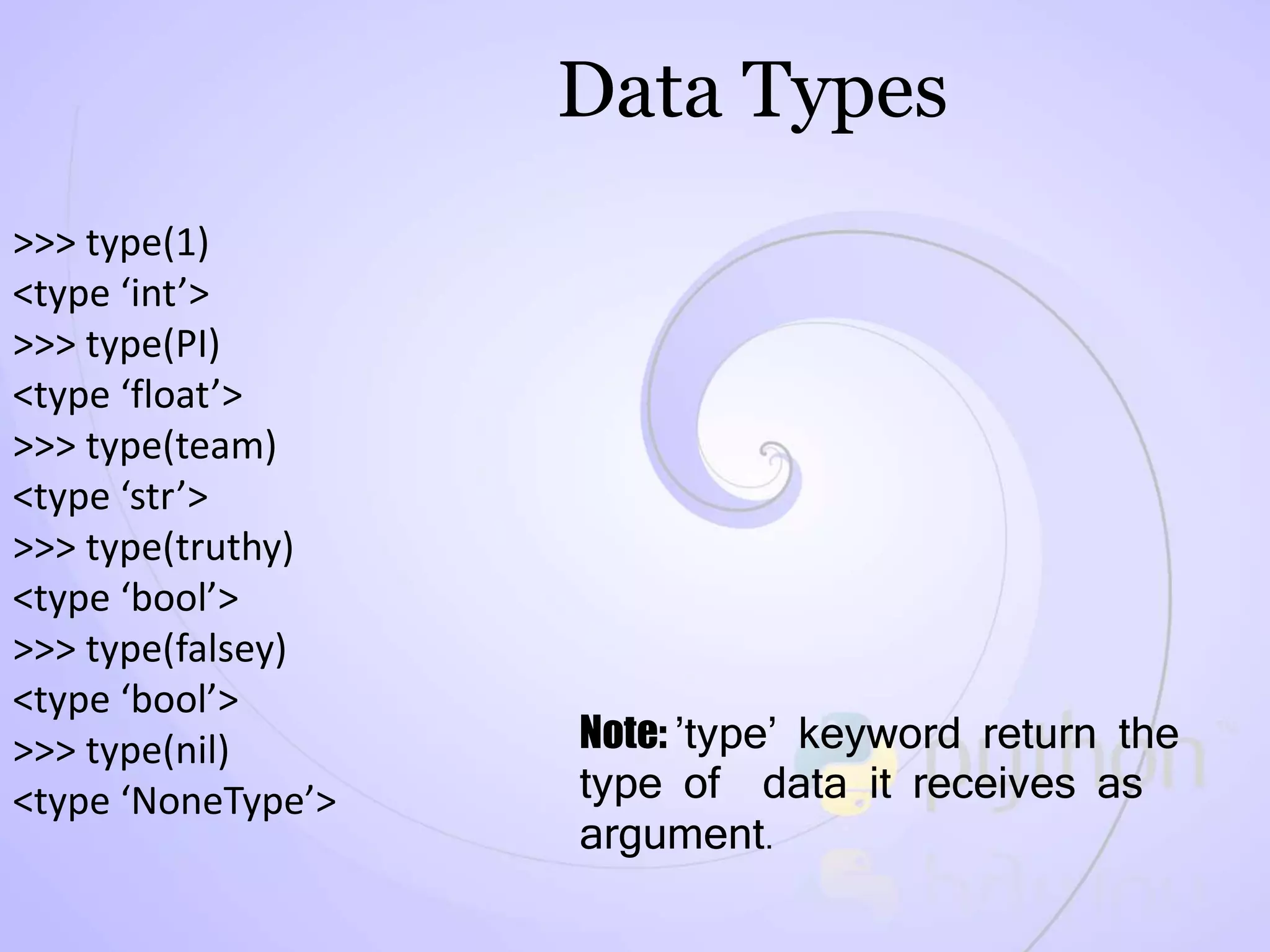
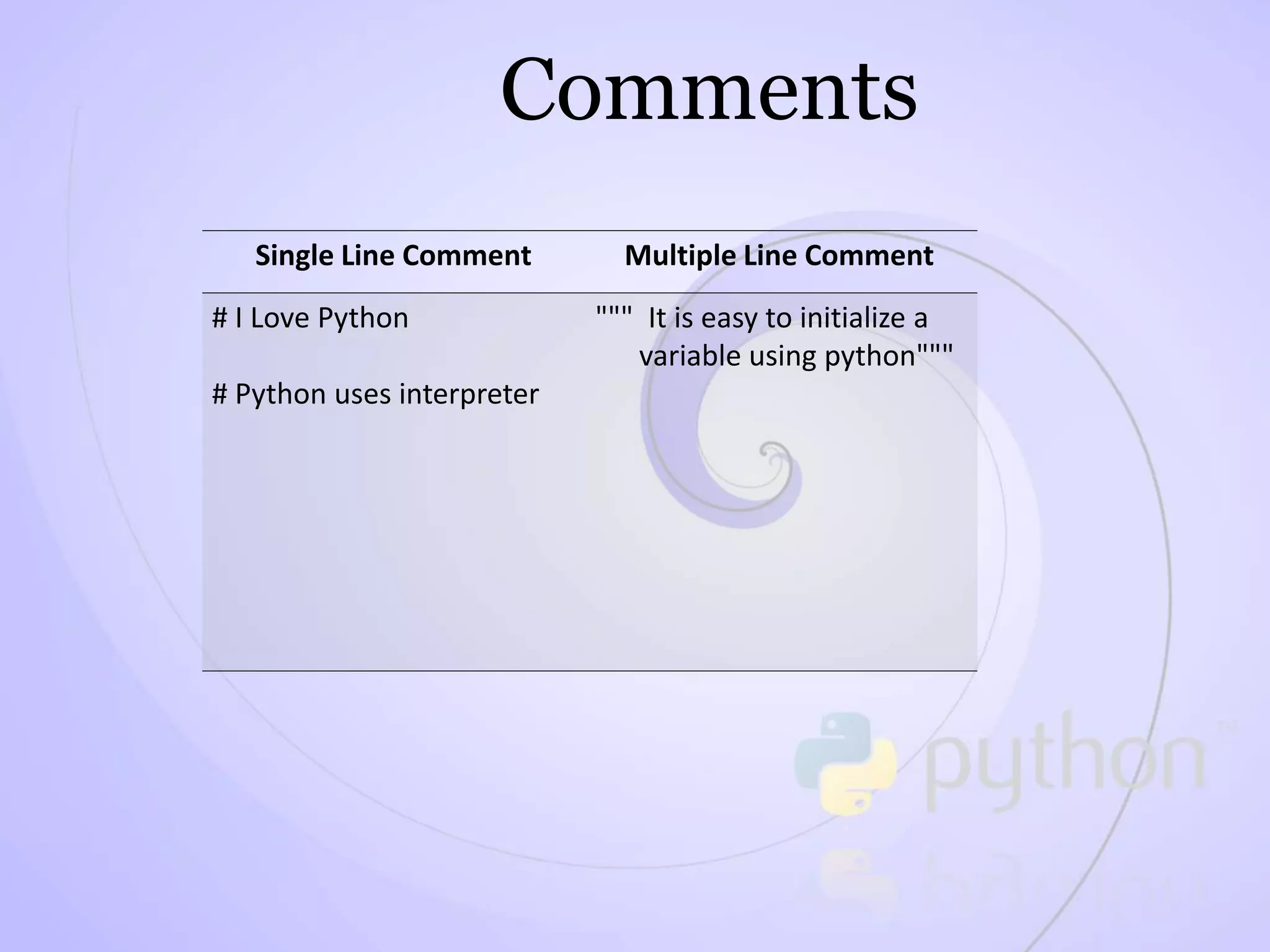
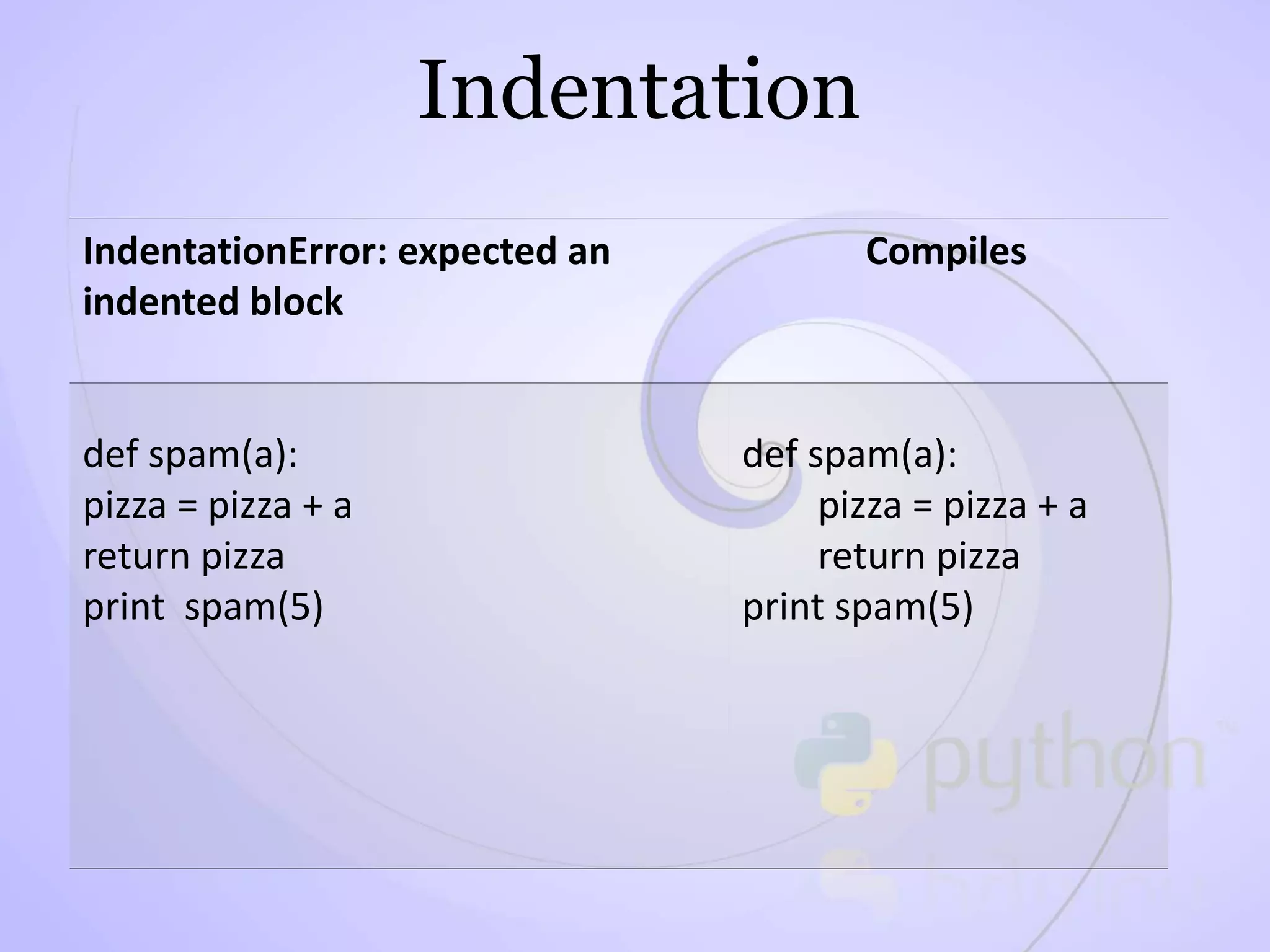
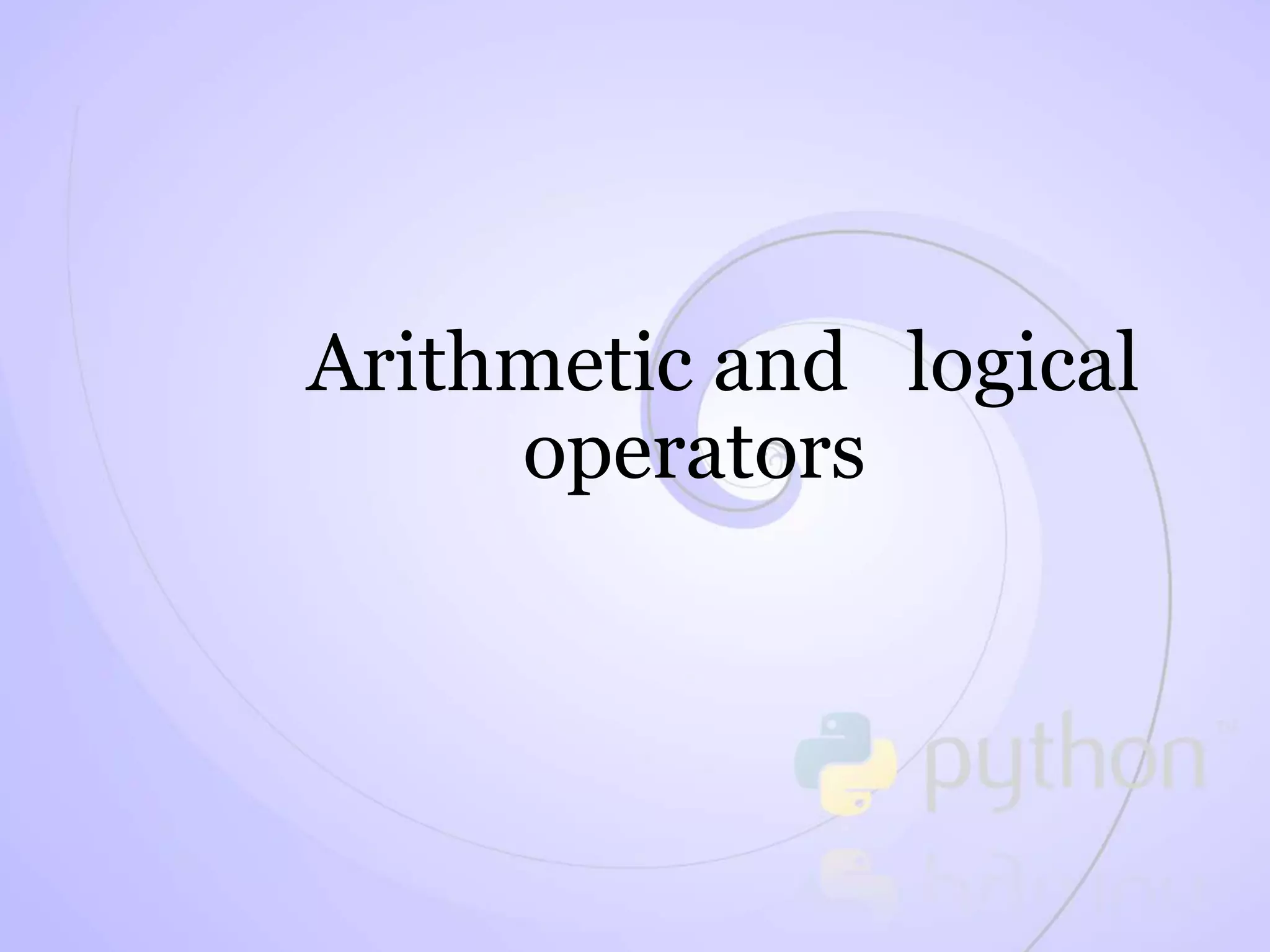
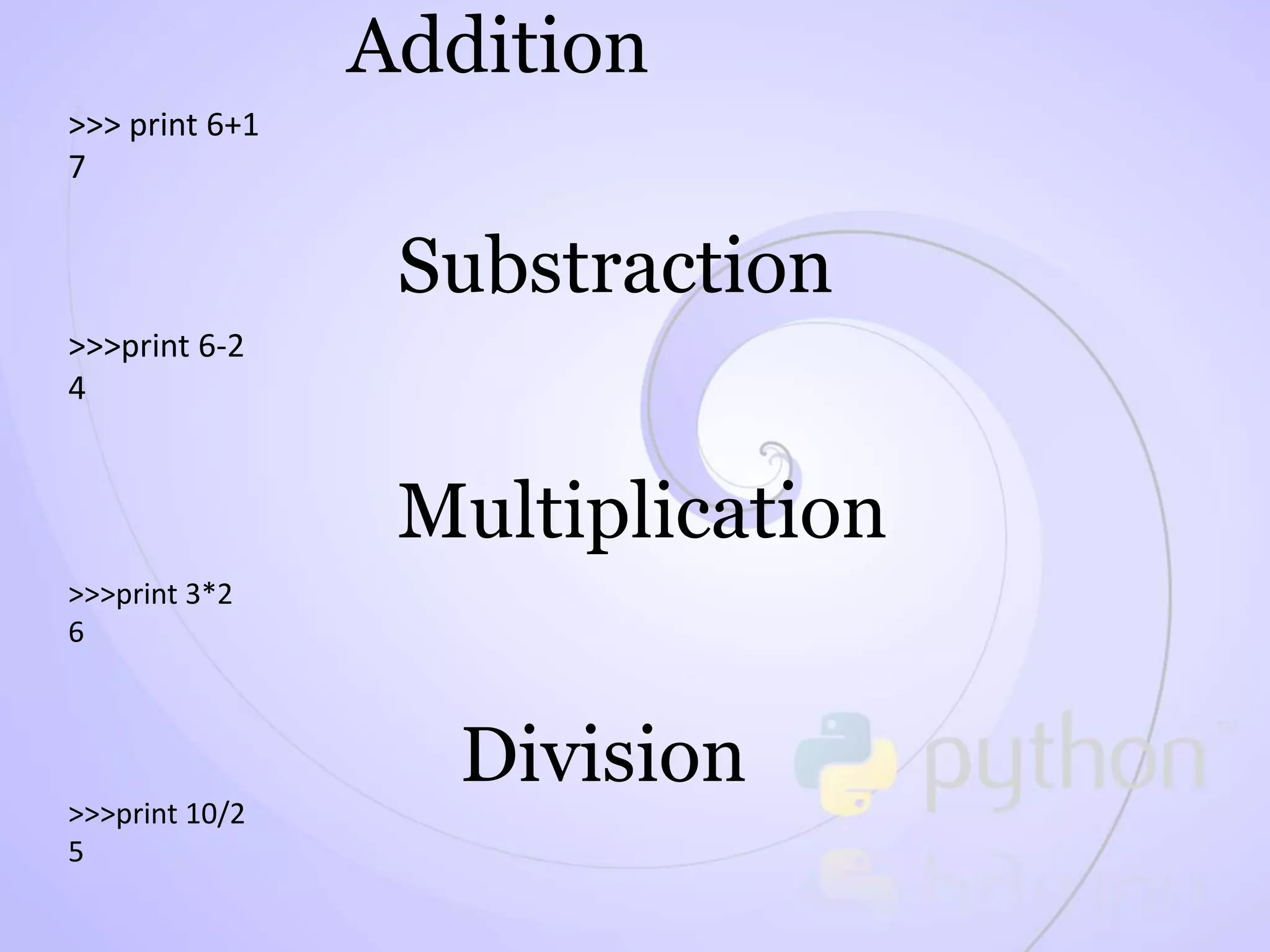
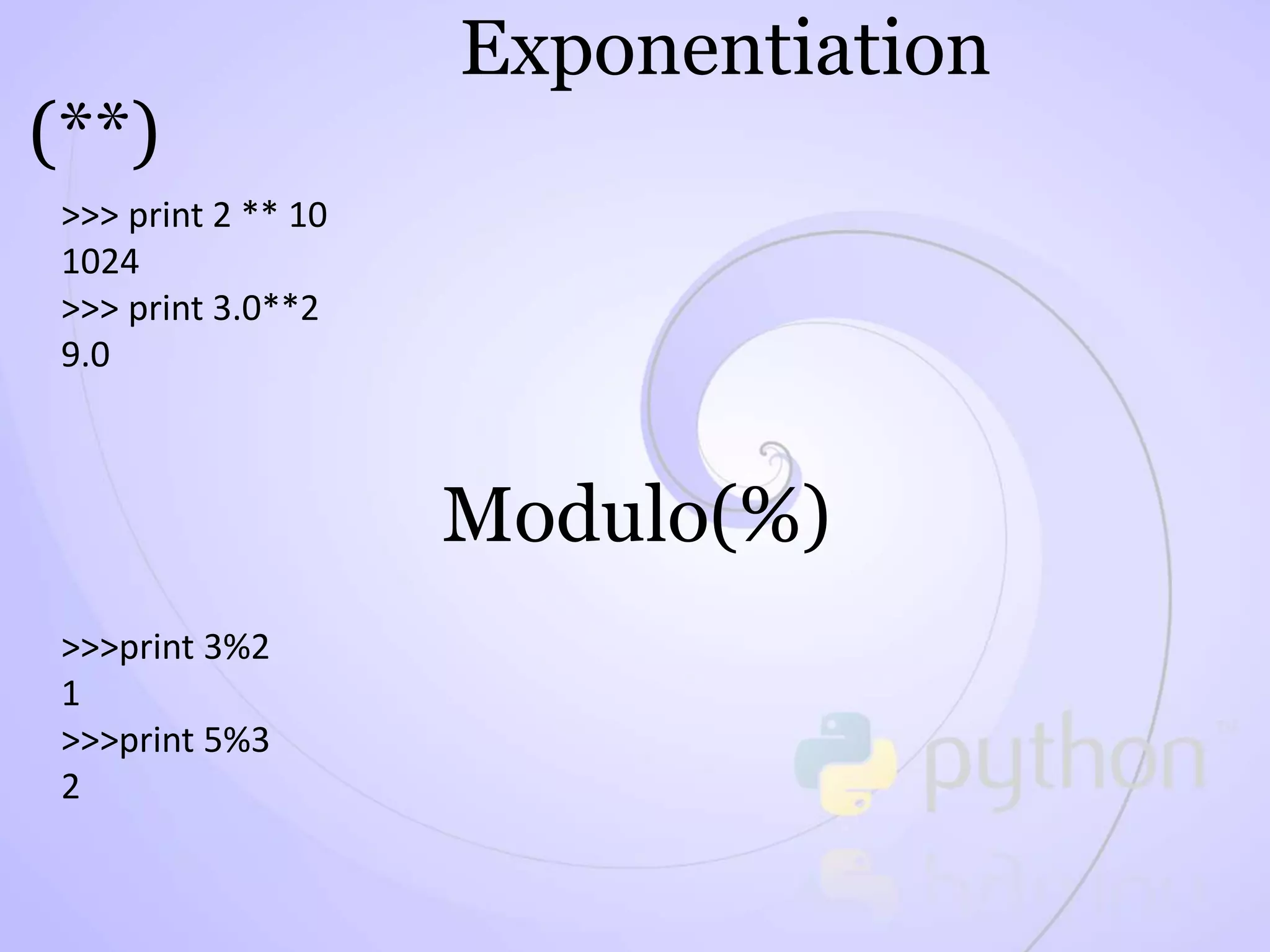
![Strings >>>hi=“Hello World” >>>print hi Hello World >>>sem=“Hangman” Indexing In Strings >>> hi='hello Jarvis' >>> print hi[-1] s](https://image.slidesharecdn.com/pythonppt-150822193741-lva1-app6891/75/Python-The-programming-Language-16-2048.jpg)
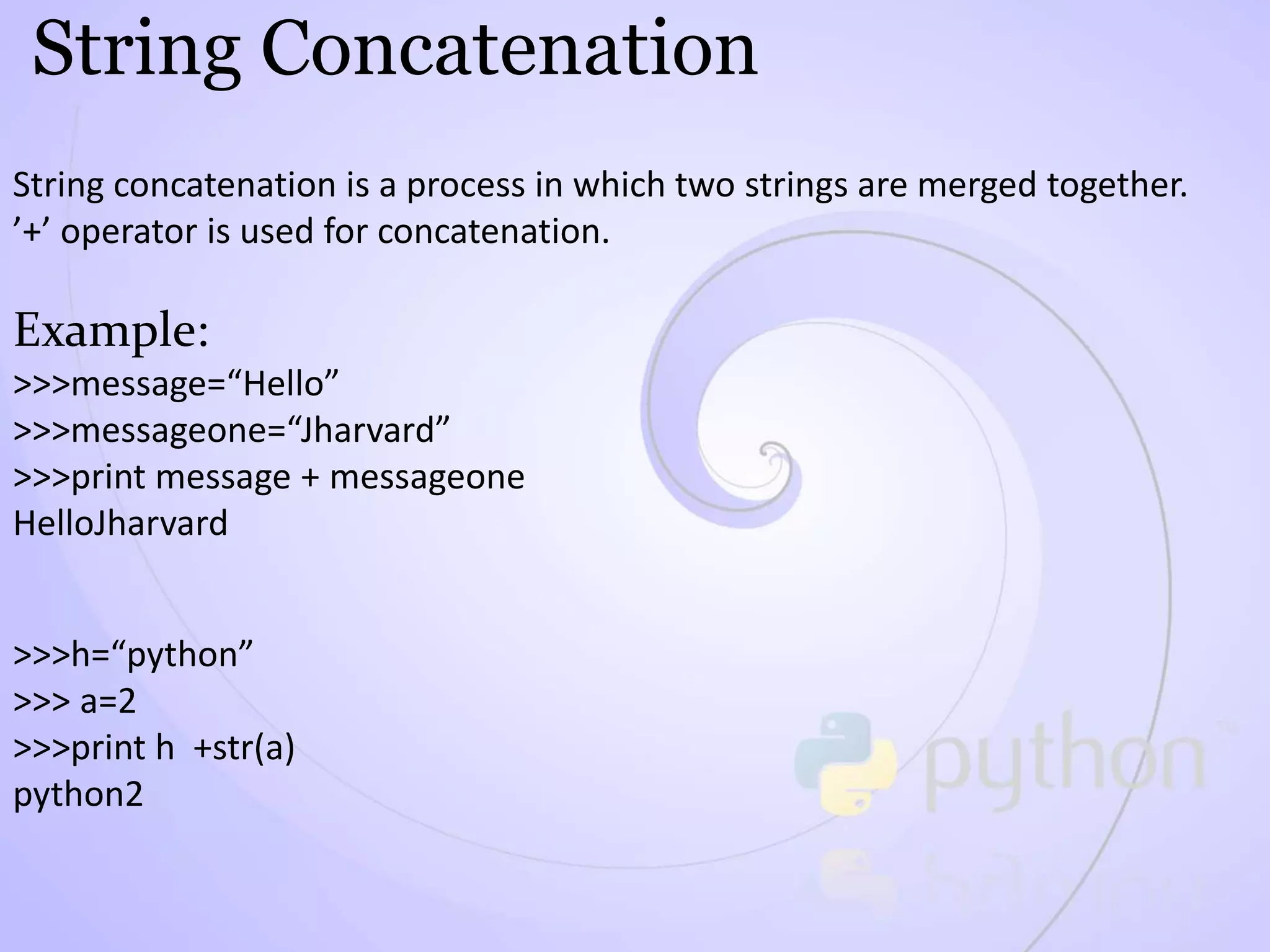
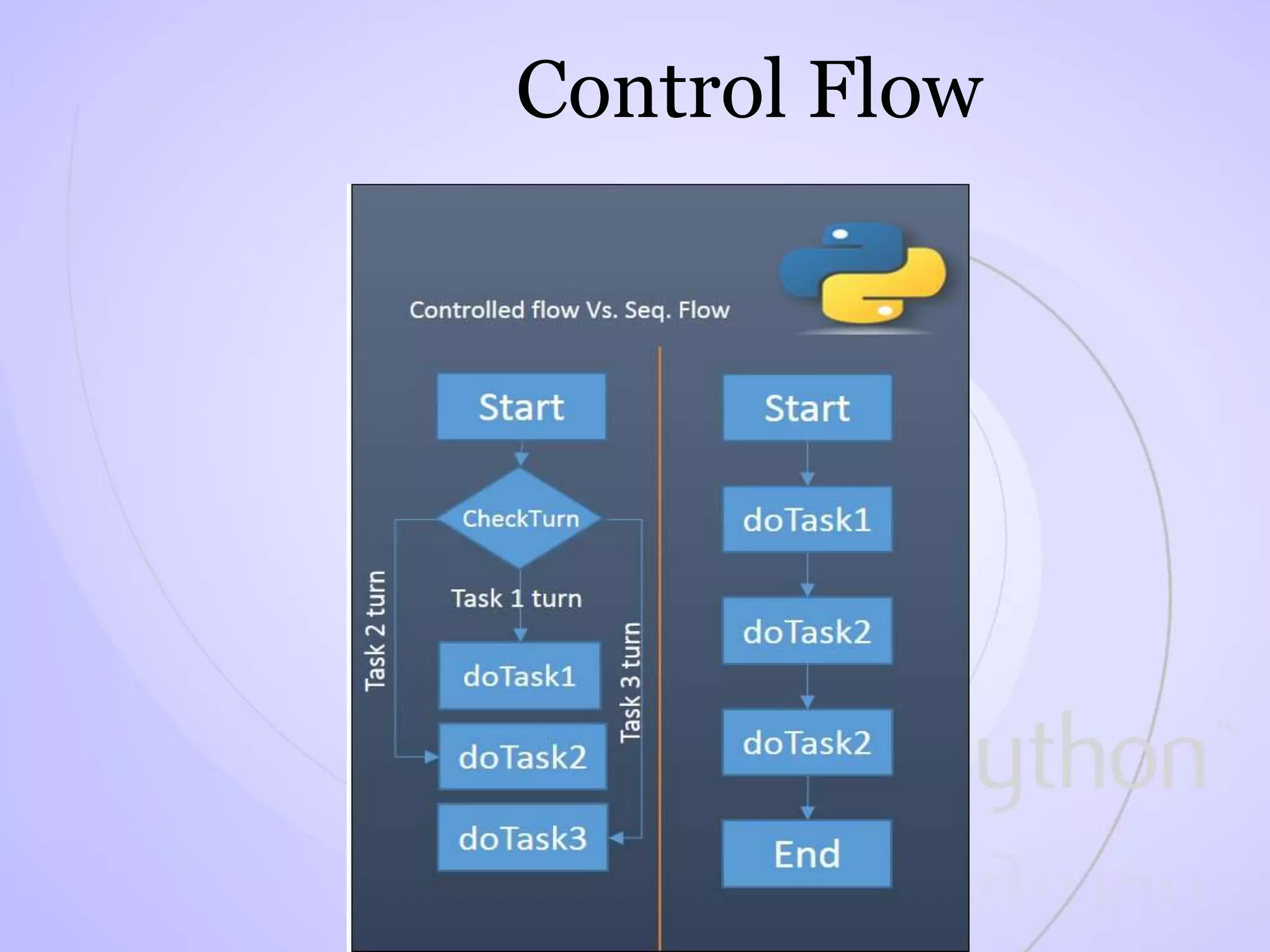
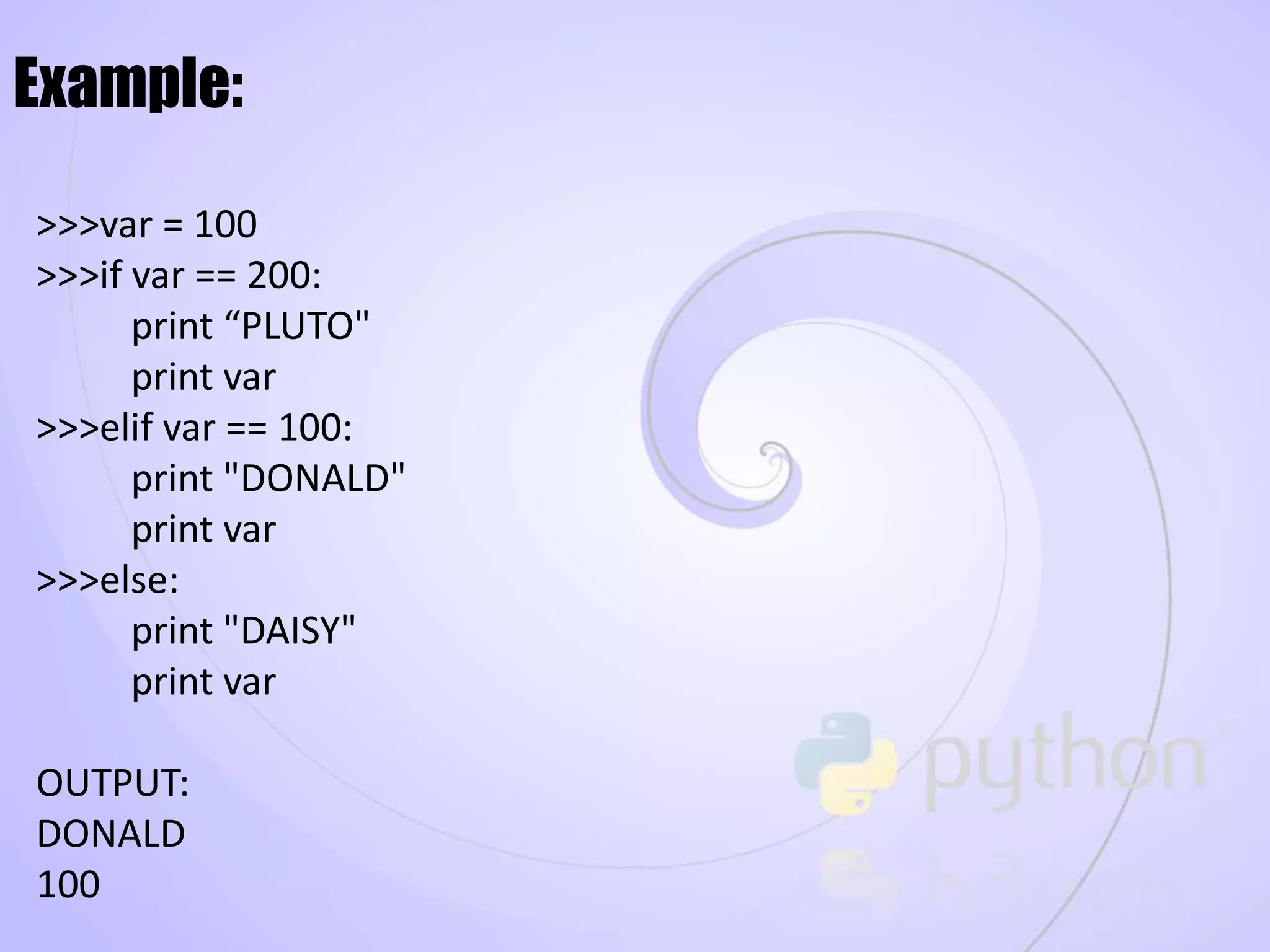
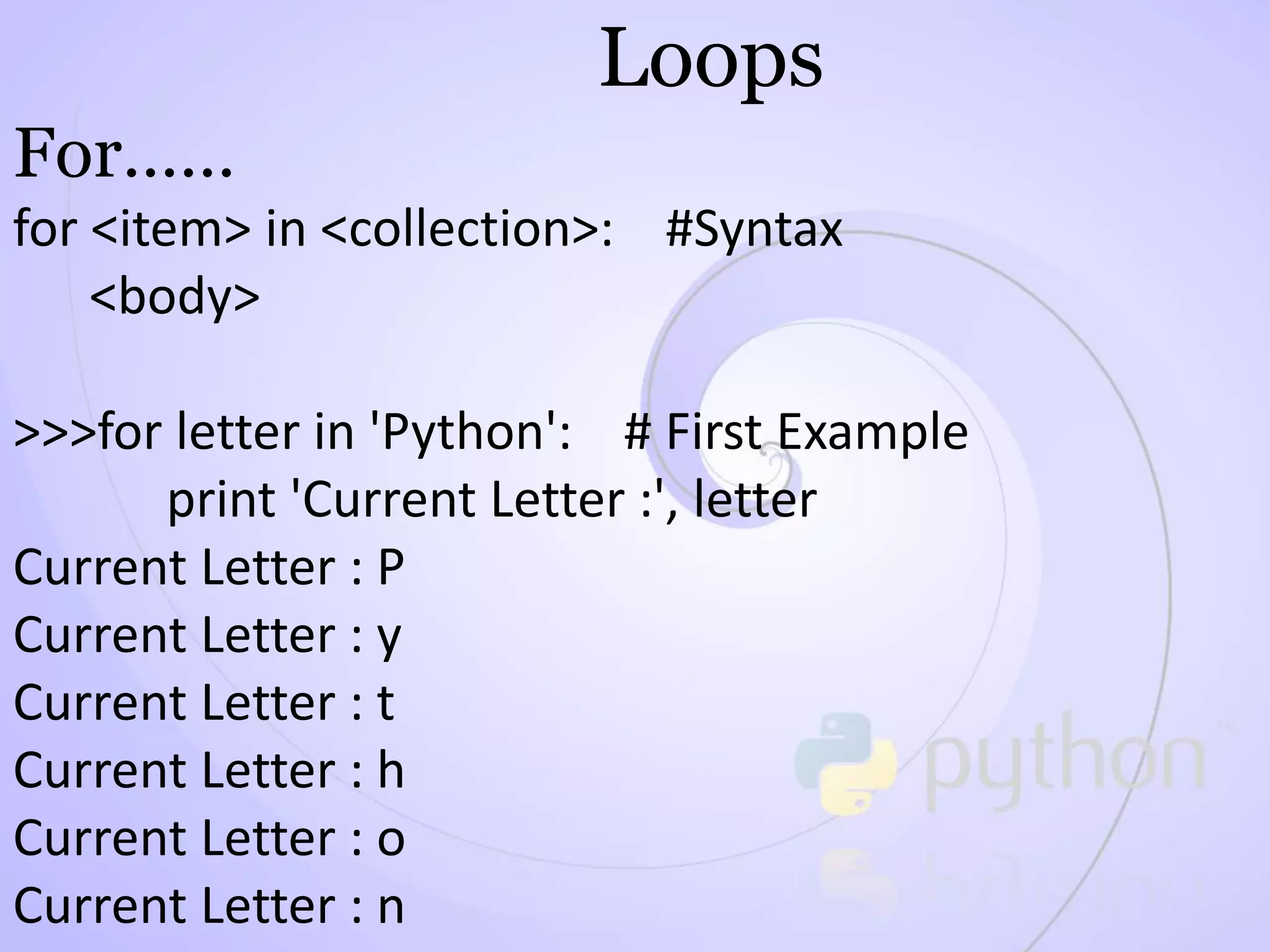
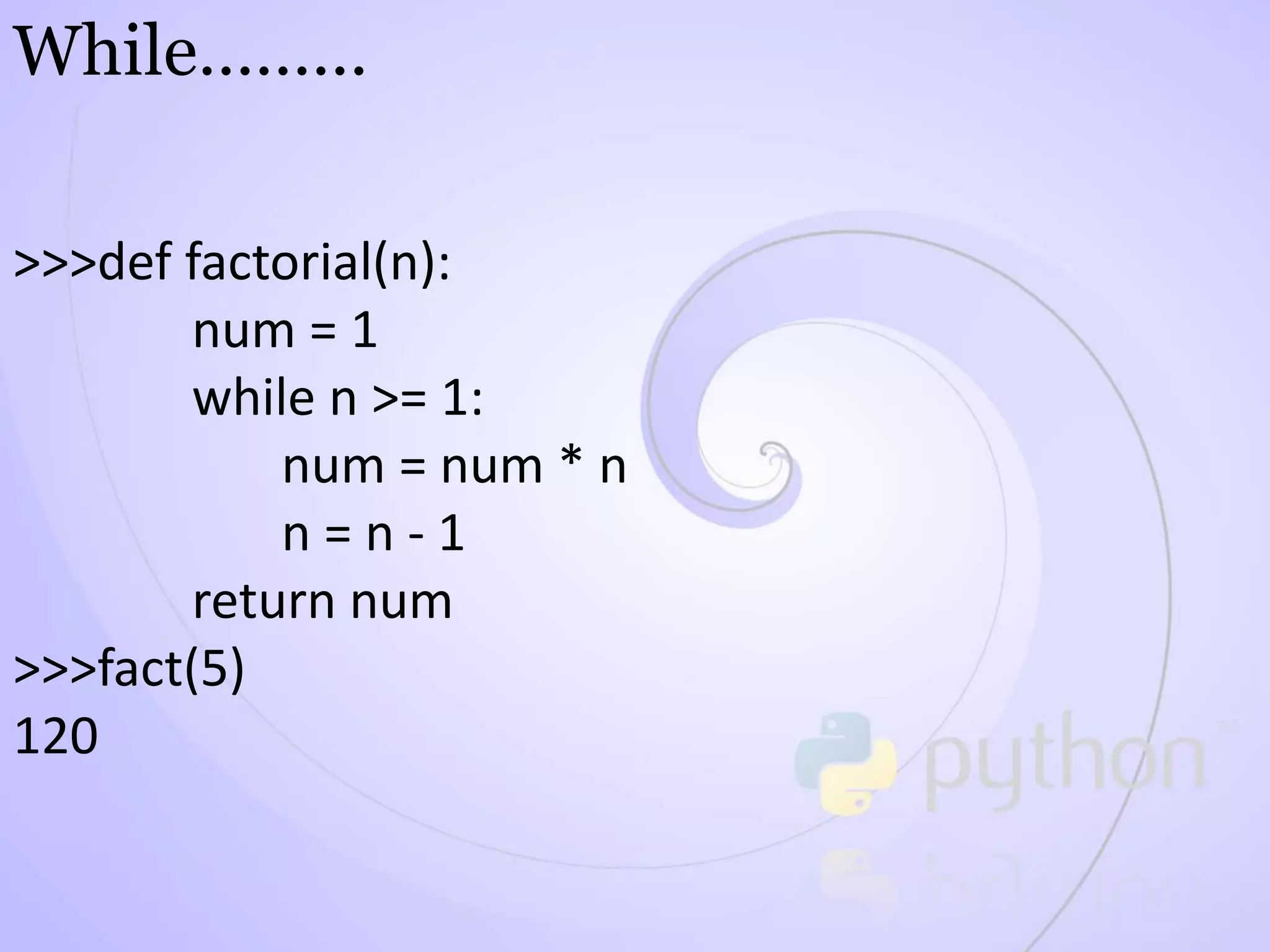
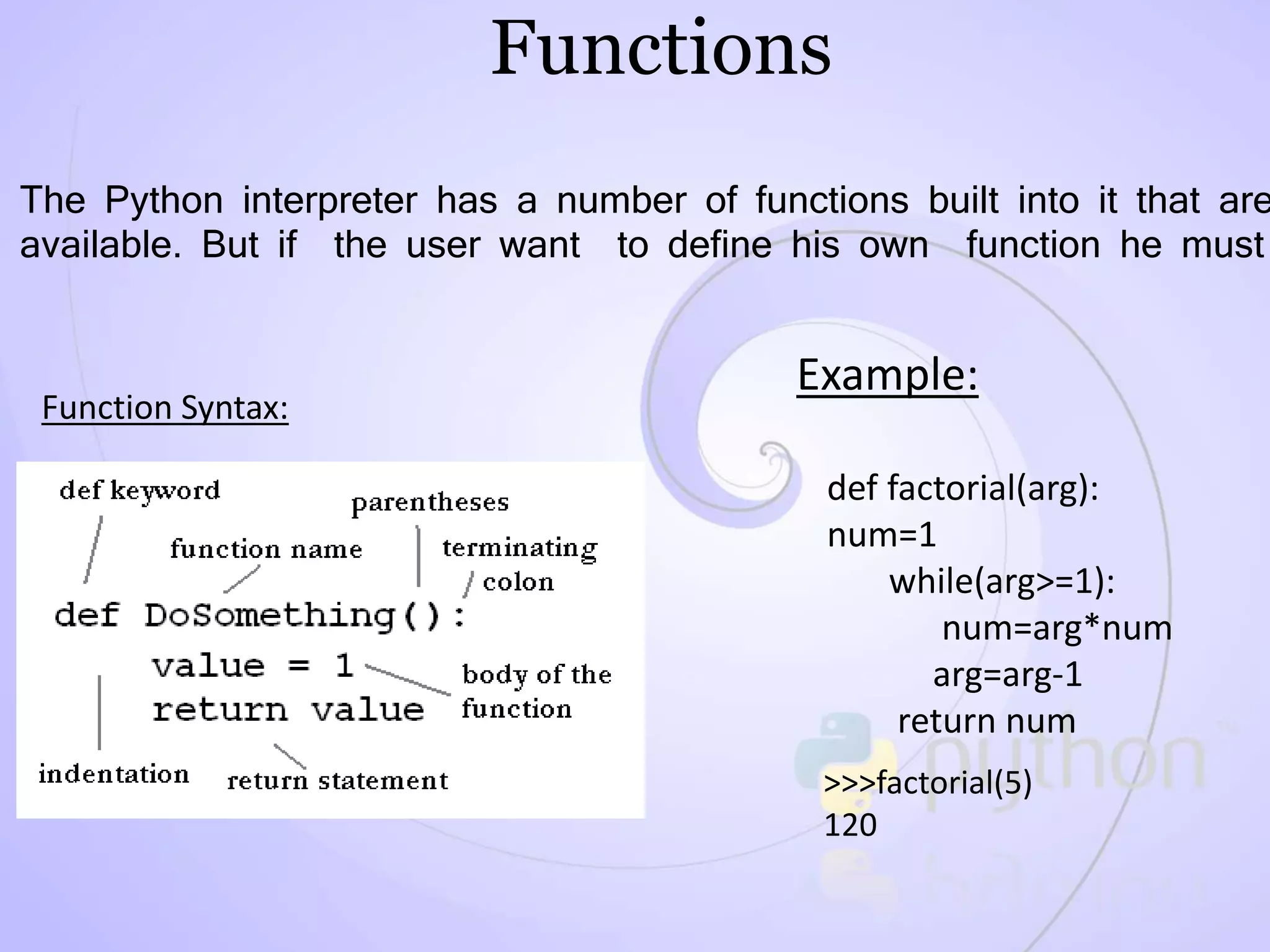
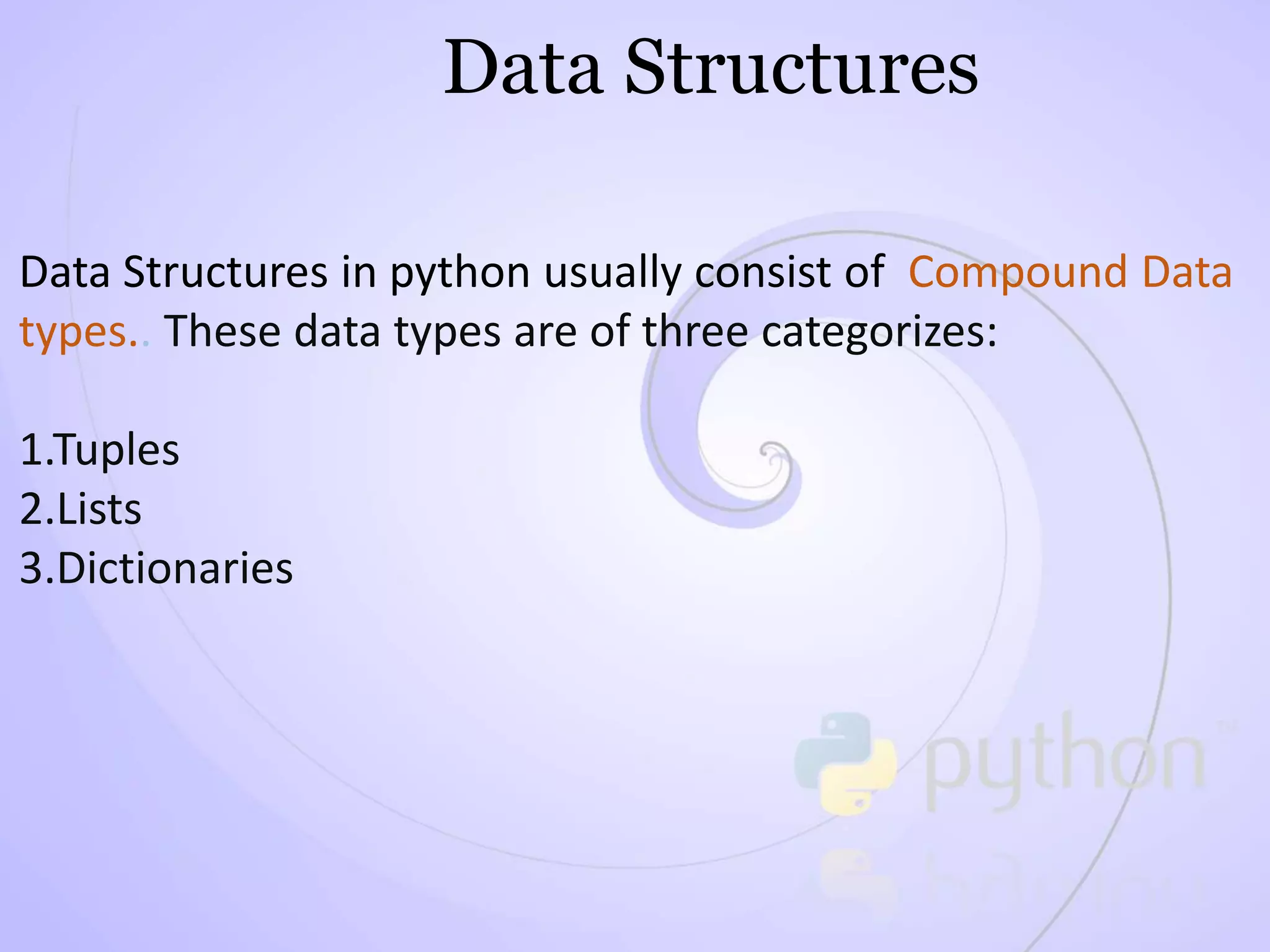
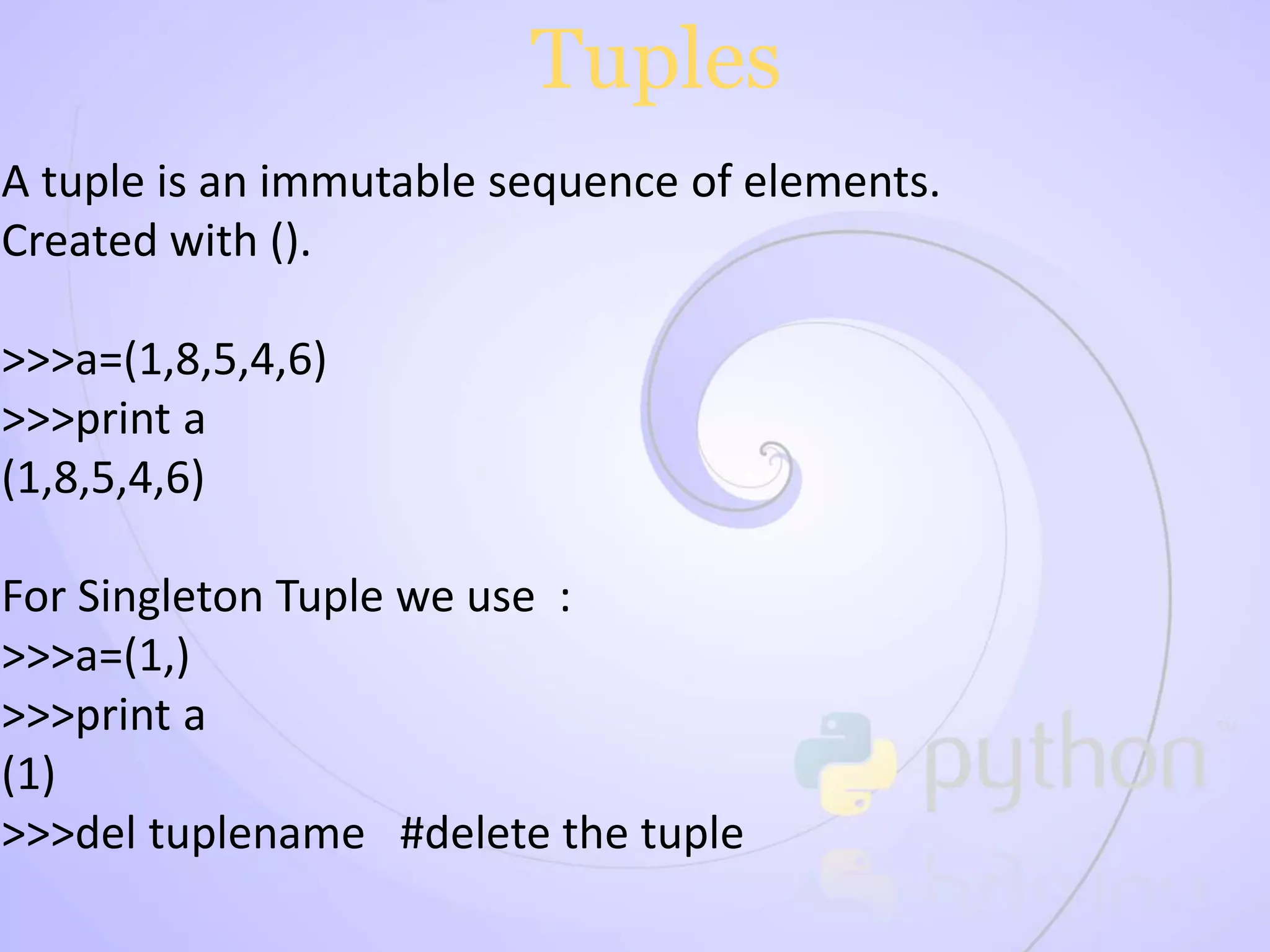
![Lists • Look a lot like tuples – Ordered sequence of values, each identified by an index – Use [1,2,3] rather than (1,2, 3) – Singletons are now just [4] rather than (4, ) • BIG DIFFERENCE – Lists are mutable!! – While tuple, int, float, str are immutable – So lists can be modified after they are created!](https://image.slidesharecdn.com/pythonppt-150822193741-lva1-app6891/75/Python-The-programming-Language-25-2048.jpg)
![len(list) max(list) min(list) list.append(obj) list.count(obj) list.index(obj) list.reverse() list.remove(obj) list.insert(i,obj) list.pop([i]) list.sort() List Methods:](https://image.slidesharecdn.com/pythonppt-150822193741-lva1-app6891/75/Python-The-programming-Language-26-2048.jpg)
![Example: >>>lst=[5,8,3,4,6,4] >>>print len(lst) >>>print max(lst) >>>print min(lst) >>>lst.append(10) >>>print lst >>>print lst.count(4) >>>lst.reverse() >>>print lst >>>lst.remove(6) >>>print lst >>>lst.insert(1,0) >>>print lst >>>print lst.pop(3) >>>lst.sort() >>>print lst Output: 6 8 3 [5, 8, 3, 4, 6, 4, 10] 2 [10, 4, 6, 4, 3, 8, 5] [10, 4, 4, 3, 8, 5] [10, 0, 4, 4, 3, 8, 5] 4 [0, 3, 4, 5, 8, 10]](https://image.slidesharecdn.com/pythonppt-150822193741-lva1-app6891/75/Python-The-programming-Language-27-2048.jpg)
![Dictionary Dictionary is an unordered set of key:value pairs. Key are always unique to values. Use {} curly brackets to construct the dictionary,and [] square brackets to index it. d = {'key1' : 1, 'key2' : 2, 'key3' : 3} Monthly_numbers={‘Jan’:1, ’Feb’:2, ’Mar’:3, 1 :’Jan’, 2 :’Feb’,3 :’Mar’} >>>Monthly_numbers[‘Feb’] 2 Syntax:](https://image.slidesharecdn.com/pythonppt-150822193741-lva1-app6891/75/Python-The-programming-Language-28-2048.jpg)
![Dictionary methods ● clear() ● copy() ● has_key() ● keys() ● pop() ● values() ● del dict_name[key_name] ● dict_nme[key_name]=value](https://image.slidesharecdn.com/pythonppt-150822193741-lva1-app6891/75/Python-The-programming-Language-29-2048.jpg)
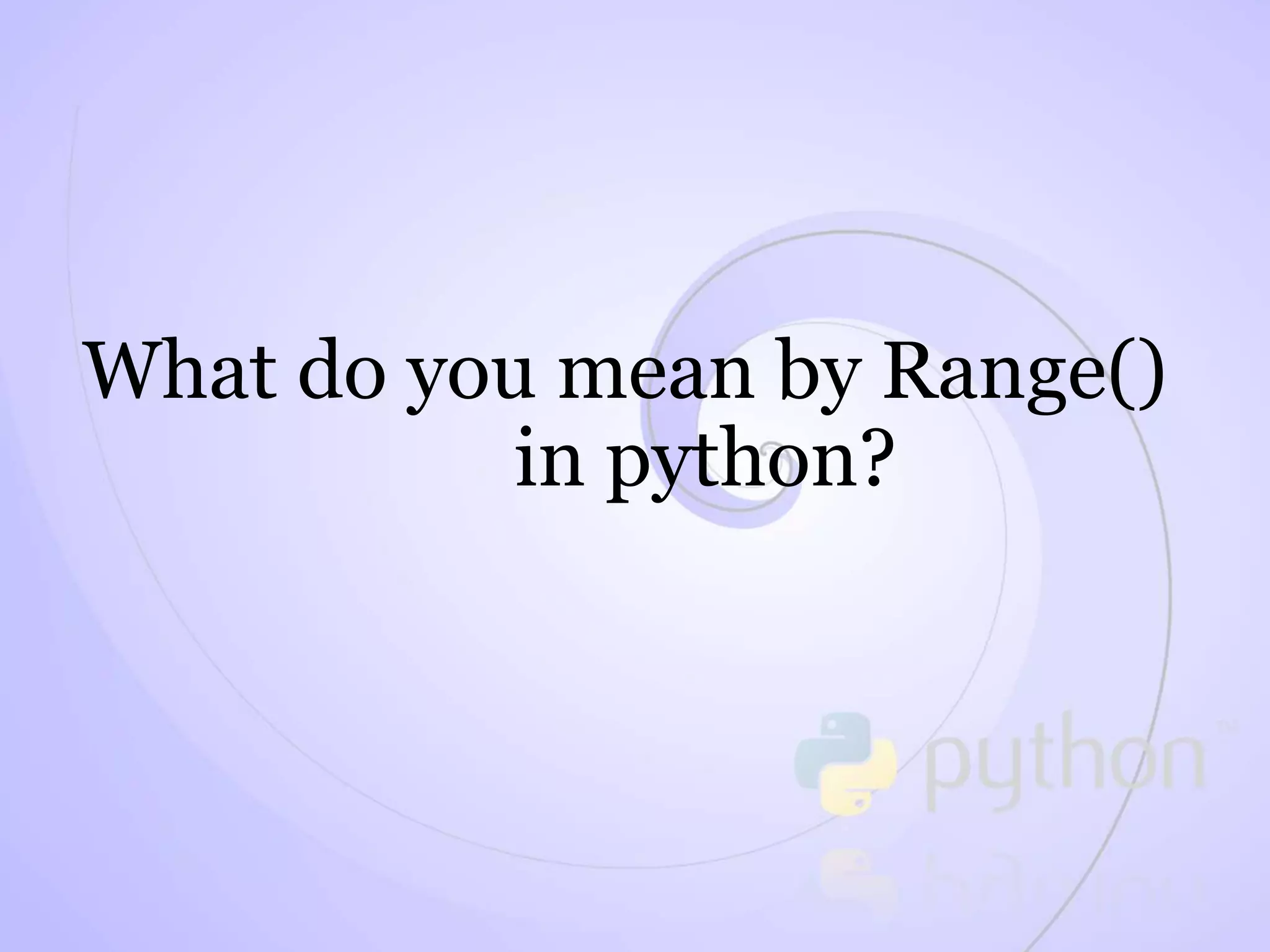
![In python range () is a function that is used as a shortcut for generating list. It is of 3 different types: 1.range(start,stop) 2.range(stop) 3.range(start ,stop,step) Examples: >>>range(5,10) [5,6,7,8,9] #last element will not be included >>>range(5,10,2) [5,7,9] >>>range(5) [0,1,2,3,4]](https://image.slidesharecdn.com/pythonppt-150822193741-lva1-app6891/75/Python-The-programming-Language-31-2048.jpg)
